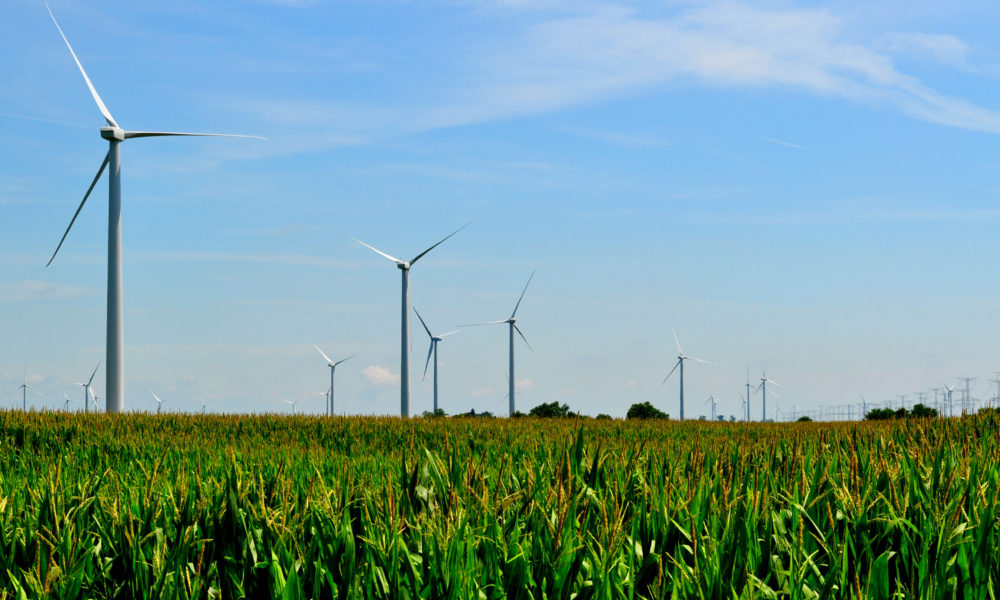Special thanks to Brian Urbaszewski, Director of Environmental Health Programs at Respiratory Health Association, for contributing to this post and the development of the University of Wisconsin – Madison (UW) Analysis.
In Illinois, the economic competitiveness of our aging and inefficient coal-fired power plants is in decline. Coal’s share of in-state generation dropped to 27% of generation in 2019. Last month, Vistra announced plans to retire the Joppa Power Plant by September 1, 2022, three years earlier than previously expected. These types of decisions not only make sense from an economic standpoint, but there are also health benefits realized as well since burning less fossil fuel for energy means healthier air for all of us to breathe. The negative health impacts of Illinois’ coal plants are well documented, including in the 2018 UCS Soot to Solar Analysis. In 2016 alone, air pollution from Illinois coal plants led to an estimated 2,300 asthma attacks and more than 350 premature deaths.
Meanwhile, the share of in-state generation from gas-fired power plants has increased to about four times more than in 2008. Transitioning away from coal generation has saved thousands of lives, but pollution from natural gas is now responsible for more deaths and greater health costs than coal in Illinois. A study released last week estimates that soot pollution from burning gas caused as many as 2,100 deaths for Illinoisans in 2017.
We need to quickly transition to a clean energy future in Illinois to prevent additional negative public health impacts from fossil fuel plants. The Clean Energy Jobs Act (CEJA) HB 0804/ SB1718 is the only bill that puts Illinois on a path to 100% carbon-free electricity by 2030 and 100% renewable energy by 2050. The public health benefits of transitioning to a clean energy future in Illinois are abundant and underscore the need for expedient action.
Transitioning Illinois to 100% carbon-free electricity
A new analysis developed by Professor Tracey Holloway and Dr. Paul Meier at the University of Wisconsin—Madison (UW) and members of the Holloway Group at the Center for Sustainability and Global Environment (SAGE), takes a detailed look into the public health impacts of transiting Illinois to 100% carbon-free electricity. The study considers the potential air quality and health impacts from decarbonizing Illinois’ electricity sector by 2030, consistent with the target in the Clean Energy Jobs Act (CEJA). The analysis uses the US Environmental Protection Agency’s (EPA) COBRA model to estimate potential air quality improvements and health benefits accrued by avoiding particulate matter exposure through CEJA.
Fossil fuel power plants are currently a major source of carbon pollution in Illinois. CEJA would result in reductions in carbon dioxide (CO2), small particulate matter (PM2.5), nitrogen oxides (NOX), and sulfur dioxide (SO2) emissions produced by the electricity and transportation sectors. The reduction of these emissions will provide major economic and health benefits to the state.
Health impacts of emission reductions in Illinois
The UW Analysis shows that by achieving the 100% carbon-free electricity target by 2030, Illinois residents would be projected to avoid 3,570 lost-work days, 1,980 cases of respiratory and asthma symptoms, 3-28 heart attacks, and 30-69 premature deaths in Illinois on an annual basis.
Each health outcome has a monetary value assigned by the EPA. Monetized health benefits are the sum of these health benefits — all health impacts multiplied by the dollar value of each one, summed up.
The value of avoiding these health impacts totals between $293 and $740 million for residents of Illinois, with additional benefits accruing to other states impacted by emissions from Illinois.
County-level air quality improvement
The UW analysis includes a complete list of Illinois county-level health benefits along with demographic data (page 6, Attachment 1). The benefits are widely distributed such that 90% of benefits occur across 40 counties in the state. Higher health benefits generally occur in more populous counties because more people benefit from improved air quality. However, all 102 counties in Illinois will see health benefits due to better air quality from moving to a 100% carbon-free electricity.
For Cook County alone, with a population of nearly 5.2 million, the monetized health benefits of moving to 100% carbon-free electricity in Illinois totals between $65 and $165 million annually. For Peoria County, with a population of a little over 182,000, the monetized health benefits total between $33 and $82 million annually.
Transportation impacts
CEJA also addresses the transportation sector which is now the largest source of carbon pollution in the state. Figure 4 of the UW Analysis shows that, while Illinois’ electricity-sector emissions comprised just 4% of baseline NOx, over 70% of the baseline NOx emissions are from Off-Highway Vehicles and Highway Vehicles. CEJA aims to remove the equivalent of one million gasoline-powered vehicles from the road through greater electrification of the transportation sector. To this end, the bill creates the Electric Vehicle (EV) Access for All program, which will ensure EVs are accessible to all residents, including those for whom car ownership is not an option through EV car sharing and carbon-free commuting through electric transport.
Time is running out
It’s imperative that we quickly transition Illinois to clean and affordable renewable energy. To do so, we must pass effective clean energy legislation by May 31. CEJA will combat climate change by sharply reducing carbon emissions in the electricity sector and transitioning Illinois to 100 percent renewable energy. CEJA will increase Illinois’ current goal of 25% renewable energy by 2025 to 45% by 2030 and 100% by 2050.
On this year’s Earth Day, President Joe Biden committed to cutting US greenhouse gas emissions in half by 2030 as part of the country’s new commitment to the Paris climate agreement. If we are going to meet this goal as a country, Illinois needs to step up. Now is the time to tell Governor Pritzker and your legislators to pass the Clean Energy Jobs Act by May 31.

